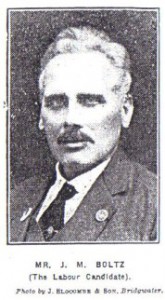The Flapper Election
In Britain, the 1930s had really kicked off in 1929. The year’s election set the tone for the previous ten, and with global financial meltdown at the forefront of the people’s minds. it seemed to many that capitalism was on the way out.
In 1928, parliament had finally given all women under the age of 30 could vote. The election of the following year was hence labelled by some as the ‘The Flapper Election’.
With a background of rising unemployment and the class conflict of the General Strike only four years past, a more socialist programme seemed an obvious alternative to the failed capitalist policies of previous decades.
The Liberals campaigned on the theme ‘We can conquer unemployment’ and gained 19 seats. The Conservative Party took the slogan ‘Safety first’ and lost 152. The clear winners, however, were the Labour Party under Ramsay MacDonald, gaining 153 seats and becoming the largest party in parliament with 287 Members of Parliament, consigning the Tories to Opposition with 260. However, it was Lloyd George’s Liberals with 59 who held the balance of power. The result was a HUNG PARLIAMENT.
McDonald’s new Government attempted to tackle unemployment by raising unemployment pay, improving wages and conditions in the coal industry and launching a slum clearance programme.However, with capitalist still logic dominant, it was increasingly difficult to implement socialist policies – in the face of deepening depression, MacDonald sought to deal with a widening balance of payments in traditional capitalist fashion. Ignoring the urgings of left-leaning economists like Keynes, he cut spending and introduced wage restraint. His measures were highly controversial, not least with Labour itself. and before long both his cabinet and the wider party split wide open.
McDonald’s answer was to go into National Coalition with Tories and Liberals. Labour members cried betrayal, unemployed areas of the country erupted into outright riot, and outside left groups like the Communist Party enjoyed a surge in membership.
By 1931 the Conservatives had forced McDonald to call a new General Election.
Bridgwater 31. 5. 1929
1929 also hinted at change to come in Bridgwater. At the election, the Conservatives managed to defend their seat from the Liberals, their main opponents – but support for the growing Labour Party jumped from the 1000 votes they gained in the pre-General Strike election of 1924 to an impressive 6000. Bridgwater was a working class town, hit hard by the new depression, and housed a sizeable electorate increasingly attracted to a socialist alternative.
| Croom Johnson | Conservative | 15,440 |
| JW Molden | Liberal | 11,161 |
| J.M Boltz | Labour | 6,423 |

